Everything you need to know about different cuts of beef and how to use them!
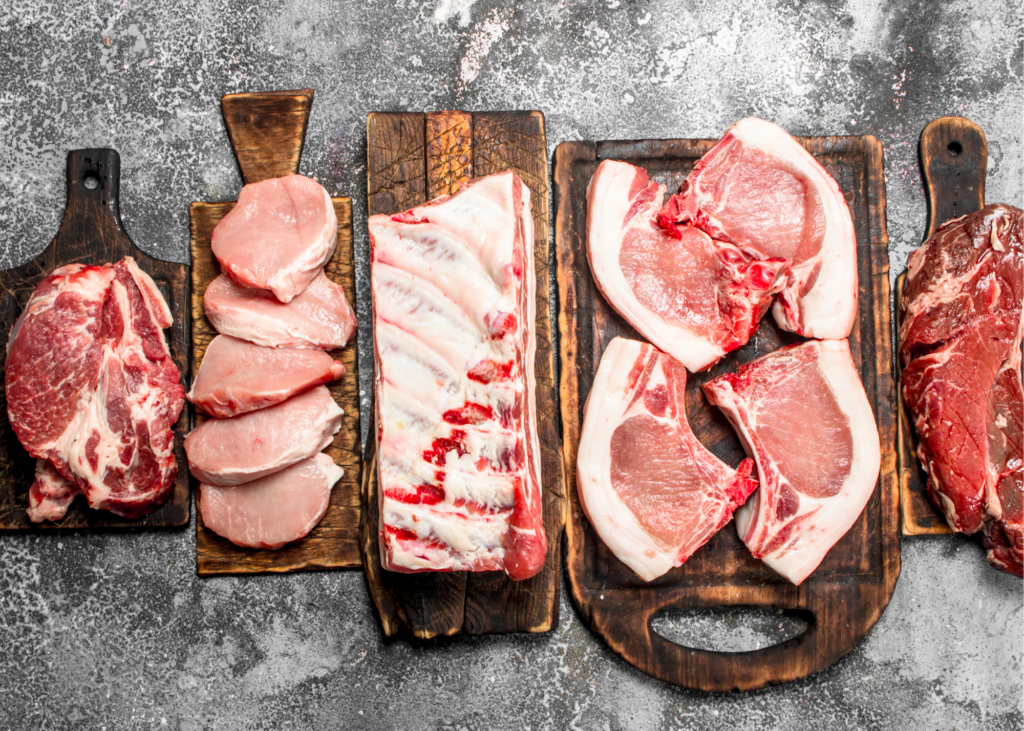
A walk down the meat aisle can be a bit confusing at times.
You may be asking yourself some of these common questions. How do I know what cut of beef to buy? Which is the best cut for the dish that I’m making? If it’s from the same animal, does it really matter what kind of cut the meat is? Isn’t beef, beef?
Well, yes, beef is beef, but flavor, texture, and what part of the cow’s body the meat comes from makes a huge difference.
For example, you wouldn’t use ground beef and call it a steak any more than you would take skirt steak and call it a tenderloin. Different parts of the cow create different flavors.
Think about it this way, a cow uses different parts of its body and muscles to walk through a field.
The muscles used to walk and stand are used more often than, say, the muscles in the middle of its body. The muscles used most often gain muscle tone and get tough (much like how a toned person can “flex” their arm muscles into a tight mound).
The cuts that come from parts of the cow like the legs, the behind, the neck, and the chest tend to be tougher – which translates to longer cooking times and certain cooking methods.
The muscles in the center of the body aren’t worked as much, so they tend to create more tender cuts of meat – hence the “tender”loin making a juicy, flavorful, filet mignon.
How do we know what cut of beef to use for various recipes?
Well, let’s get down to basics with the different cuts of beef.
Here is a helpful diagram or beef cuts chart that you can refer back to.
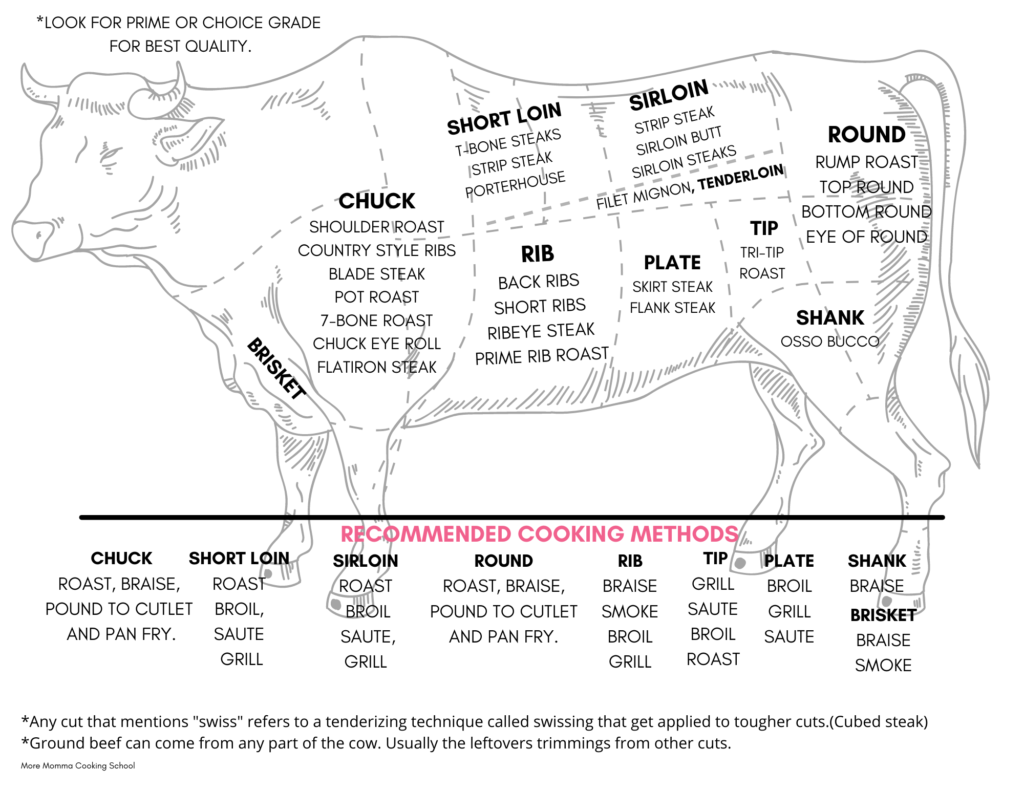
The Primal Cuts of Beef:
There are 8 types of cuts, commonly referred to as “primal” cuts.
These cuts make up the 4 sections of the front of the cow, the forequarter, while the other 4 cuts create the hindquarter, or back half of the cow.
In the forequarter, you have the Chuck (shoulder), Brisket (chest), Rib, and the Plate (belly).
In the hindquarter, you have Short Loin (back), Sirloin (back), Round (back end), and the Shank (leg).
Sub-Primal Cuts of Beef:
These 8 primal cuts are further divided into sub-primal cuts.
For example, the Sirloin can be divided into the Top Loin, Tenderloin, and Bottom Loin.
Then, those sub-primal cuts are divided even further into retail cuts – better known as the meat you find wrapped in cellophane at your local grocery store.
This is where things can start to get really confusing.
Retail Cuts:
Retail cuts can have up to 8 different retail names – even though it’s the exact same cut of beef. It may be helpful to ignore words like, “steak” and “roast”.
Instead, look for clue words, such as the primal cut to be listed somewhere in the name on the label, to know what you are really getting.
Words such as “round”, will let you know that you are getting a piece of meat from the round primal cut (the back end of the cow).
“Chuck” can also be called “shoulder”, “arm”, or “blade”.
“Plate” is often referred to as “flank”.
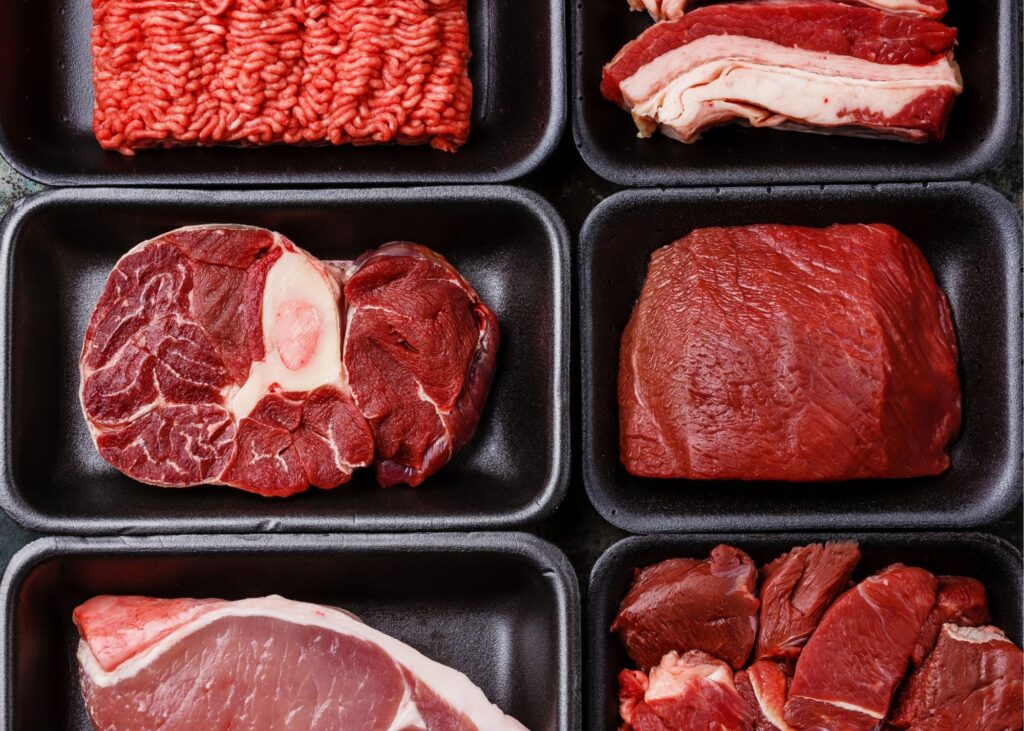
I love these two cuts because they can be less expensive and create a wonderful tender meat. Check out these easy recipes that are inexpensive, yet so full of flavor.
Instant Pot Shredded Beef Barbacoa
Retail Cuts Without Primal Cut Names:
There are also market names that don’t have any mention of the primal cut at all.
For example, the 7-Bone Roast comes from the chuck. This cut runs through a piece of the shoulder blade bone that resembles the number 7.
Flat-Iron steak also comes from the chuck above the shoulder blade, but is a more tender cut that contains more marbling.
Hanger Steak is a small v-shaped muscle that comes from the diaphragm, which is said to be the most tender, next to the tenderloin.
Denver Steak is also from the chuck, but from under the blade and contains a lot of marbling. London Broil used to refer to flank steak only, but is now a more general term for the way it is cooked.
London Broil can be any tough cut that has been sliced thin, but it is usually from the flank, bottom sirloin, or top round.
Retail Cuts With The Word “Eye”:
Another thing to know when looking at cuts of beef at the grocery store is that muscles are grouped together in a cow’s body and the center of a cluster of muscles is called the “eye”.
You’ll see “eye of round”, which is the center most muscle of the round (rump) of the cow.
There is also the rib-eye, which comes from the rib.
However, although both cuts have the word “eye” in their name, there is a glaring difference between the two of them.
The rib-eye comes from a very tender part of the cow, while the eye of round comes from a very tough cut.
What Are The Most Tender Cuts Of Beef?
Basically, the further away from the hooves and horns, the more tender your cut will be.
The most tender cuts will be anything from the short loin and the tenderloin. This includes the T-bone, Porterhouse, Strip Steak, Filet Mignon, Chateaubriand, and my personal favorite, the Ribeye steak.
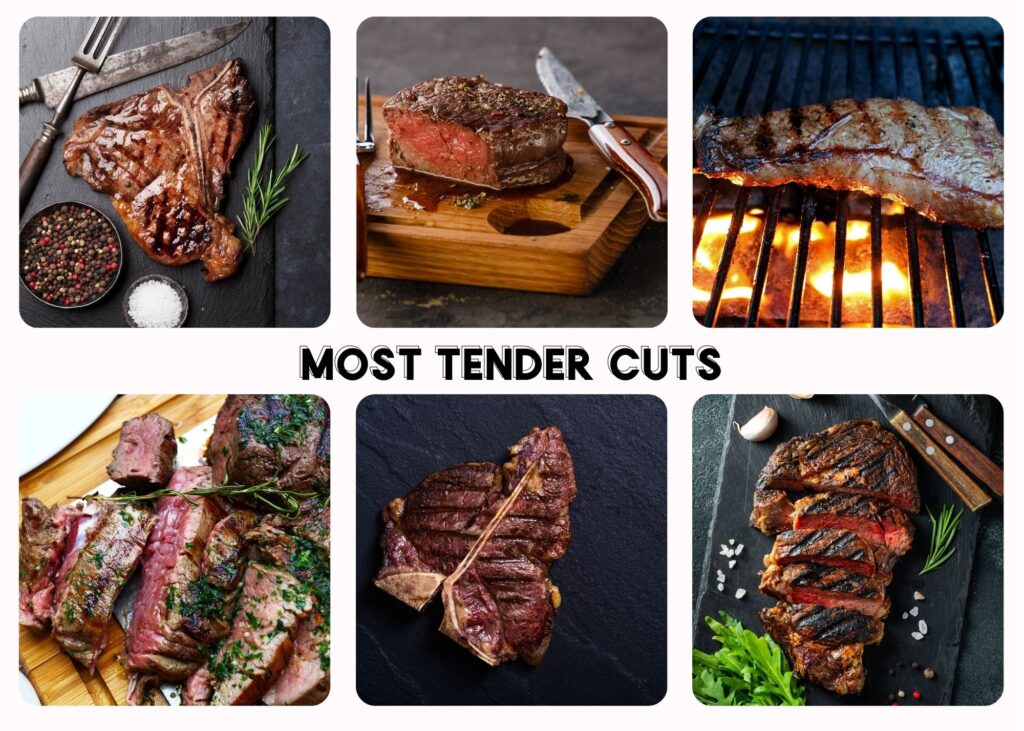
Some recipes for these are
How to Cook the Perfect Filet Mignon at Home.
However, just because a cut doesn’t come from the center of the cow, doesn’t mean that it can’t be tender.
When shopping, look for cuts with lots of marbling (white fat interspersed with the red meat), and less connective tissue (tissue that connects the muscles; elastin, silverskin, tendons).
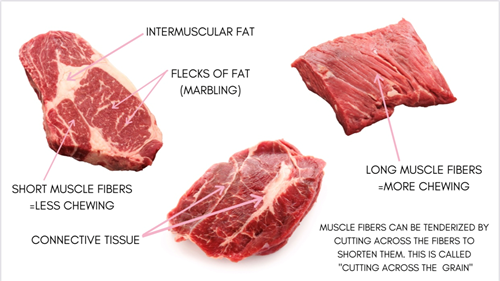
If you see the word, “swiss” on the label, that does not refer to the country of Switzerland, it refers to the term “swissing”, which is a method of tenderizing various cuts of beef.
“Cubed steak” is another misnomer. It does not mean steak that has been cut into cube shapes, but that it has been tenderized in a certain way.
Also, making thin slices against the grain of the meat and marinating with acidic ingredients can also help break down tough muscle, creating a tender piece of meat.
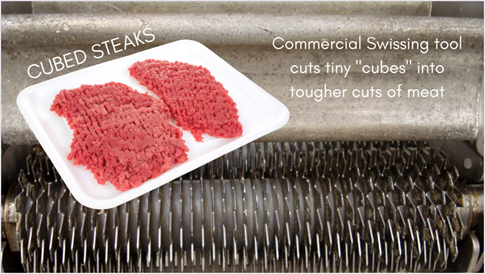
Learning the ins and outs of how to select the right cut of beef for your recipe can be tricky, but these basic guidelines can help get you on the right track.

